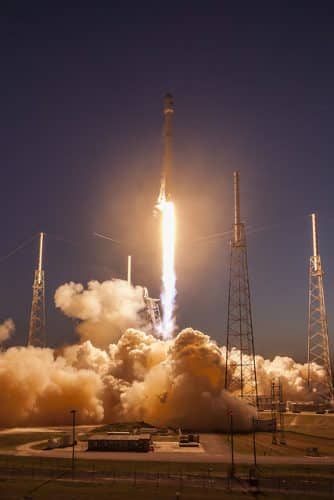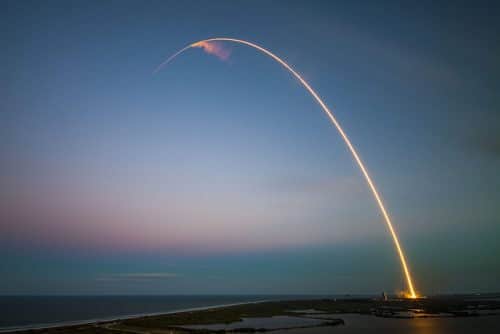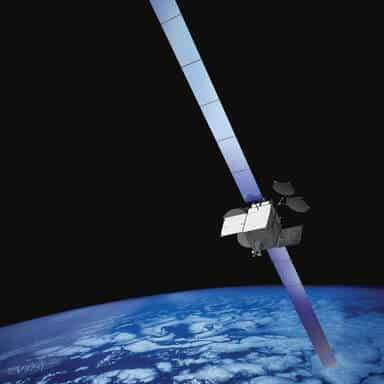In its second launch since the beginning of the year, SpaceX today succeeded in launching a communications satellite into space for a high geostationary orbit around the Earth. The attempt to land the first stage of the Falcon 9 launcher failed again, but this time the company expected it

In its second launch since the beginning of the year, SpaceX today succeeded in launching a communications satellite into space for a high geostationary orbit around the Earth. The attempt to land the first stage of the Falcon 9 launcher failed again, but this time the company expected it.
During the successful launch, the company tried as usual to land the first stage of its two-stage launcher, the Falcon 9, on a mobile rig in the ocean. This is within the framework of its ongoing attempts to develop a multi-purpose launcher that will significantly reduce the cost of launching into space.
Spice X So far managed to land the first stage only once, on a ground lander, but so far she has not been able to land it safely on the mobile rig she has developed, so that it can also land in the ocean. This time too, the launcher fell heavily on the marine rig, That's what he said The company's CEO and founder, the tycoon Elon Musk.
This time, however, the company lowered expectations in advance. She announced ahead of time that the chances of success in the current experiment are low, this is because the launcher used more fuel than a normal launch, which made it difficult for it to land itself safely. Musk added that in the next launch there will be a good chance to succeed in the experiment, one after another that in the previous experiment The launcher managed to land safely on the rig, but a malfunction in one of his legs caused him to stumble and fall.
The current launch took place early Saturday morning, at 01:35 (Israel time), from the Cape Canaveral Spaceport in Florida, United States. The very execution of the launch probably brought a sigh of relief to many of the company's employees, after four attempts were rejected one after the other for various reasons, such as the temperature of the liquid oxygen that enables the combustion of the launcher's kerosene fuel, a ship that entered the closed maritime range of the launch and bad weather.

.
The satellite that was successfully launched is SES-9, an advanced communication satellite that will provide communication services for approximately 22 million households in the Asia and Pacific region, with a lifespan of approximately 15 years. The satellite is placed in a geostationary orbit at a distance of about 36,000 km from the Earth. This orbit is ideal for communication satellites, due to the fact that the duration of a satellite's orbit in this orbit is 24 hours, therefore it is coordinated with the self-rotation of the Earth, and always remains above the same point from the point of view of an observer on the Earth.

The satellite, like other satellites that are launched into a high geostationary orbit, was brought by Falcon 9 only to a lower preparatory orbit, from which it will later arrive, on its own, to its permanent orbit. In the current launch, SpaceX responded to SES's request to shorten the arrival time of the satellite to its fixed orbit, to compensate for the postponement of its launch from the end of the previous year, a postponement caused by the explosion of the Falcon 9 launcher in June of last year.
To shorten the arrival time to the fixed route, Spice X agreed Make a change in the flight profile of the launcher - the first stage will continue to operate until it has almost no fuel left. It is actually just a few more seconds of rocket combustion, which will provide additional thrust to the satellite and raise it to a higher orbit, from where it can reach the fixed orbit of 36,000 km faster.
It was this change that made SpaceX emphasize that the chance of succeeding in landing the launcher is quite low, since it will have less fuel left to carry out the rocket burns with which it lands itself.
Unlike the first time, and the only time so far, in which SpaceX managed to safely land the first stage of the Falcon 9, this time the launcher will not land on a ground lander, but on a mobile rig in the sea. The reason for this is that during a launch into space the launcher moves in the form of a wide "arc" and moves far away from the launch site. Therefore, in order to land on the ground it is required to perform additional rocket burns to return to the launch site.
In the case where the weight of the payload or the required speed are relatively low, the launcher will have enough fuel left to make the preferred ground landing. However, in the current launch the payload is quite heavy (the SES-9 satellite weighs over 5 tons) and the required launch speed is higher, so the launcher has less fuel left and it was assisted by the mobile rig, which was positioned directly below it.
See your company's previous attempt to land the first stage of the launcher in the middle of the ocean:

One response
excuses